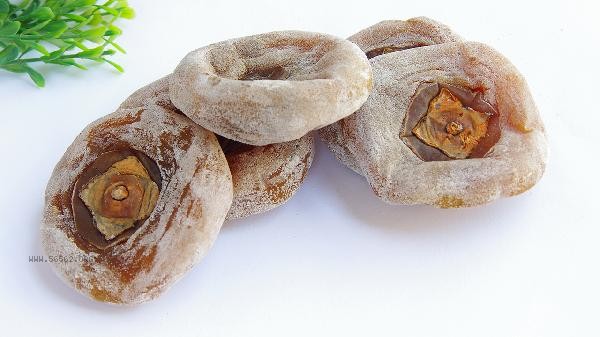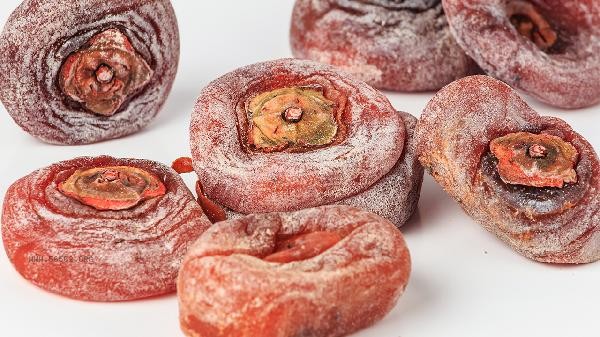Persimmon cakes still feel astringent after being dried, usually due to incomplete de astringency or improper storage. The astringency can be improved by soaking in warm water, ripening fruits, de astringency with alcohol, freezing treatment, ventilation and drying, and other methods.

1. Soak in Warm Water
Soak persimmon cakes in warm water at around 40 degrees Celsius for about 12 hours. The water temperature should not be too high to avoid damaging the texture of the fruit flesh. Warm water can accelerate the breakdown of soluble tannins and reduce astringency. During the soaking process, the water can be replaced twice, resulting in a more significant de astringency effect. After processing, the surface moisture should be dried in a timely manner to avoid mold growth.
2. Fruit ripening
Seal persimmon cakes with fruits such as apples and bananas that release a large amount of ethylene and store them for about 3 days. Ethylene, as a natural ripening agent, can promote the conversion of tannins. Suggest pairing 5 persimmon cakes with 1 apple and placing them in a cool place to observe their softening degree. This method is suitable for immature persimmon cakes with high hardness.
3. Alcohol Deswelling
Dip a cotton swab in a small amount of edible alcohol and evenly apply it to the persimmon stem area, then seal it in a fresh-keeping bag for 1 day. Alcohol can destroy the active structure of tannin cells, and the sweetness of processed persimmon cakes will be significantly increased. Be careful not to use too much alcohol to avoid penetrating the flesh and affecting the taste. This method is most effective for persimmon cakes with intact skin.
4. Freezing treatment
Place persimmon cakes in the freezer compartment of the refrigerator for 24 hours and thaw naturally. Low temperature will cause tannins to crystallize and precipitate, greatly reducing the astringency after thawing. Frozen persimmon cakes have a slightly soft texture and are suitable for direct consumption or making pastries. Attention should be paid to sealing the packaging before freezing to prevent cross contamination.
5. Ventilate and air dry
Choose a dry and ventilated place to lay persimmon cakes flat and air dry for about 3 days, and collect them at night to prevent dew. The ultraviolet rays in sunlight can oxidize tannins, and the sun exposure process requires regular flipping. This method is suitable for areas with high humidity, and the astringency is significantly reduced when exposed to sunlight until the epidermis wrinkles slightly. Avoid exposure to sunlight that may cause sugar analysis.

When making persimmon cakes, it is recommended to choose fully ripe persimmons, peel them, and then perform astringency treatment before drying them. Traditional de astringency can be achieved by soaking in lime water, which is prepared in a 1:10 ratio and soaked in clear lime water for 2 days. Keep the environment dry during storage and use food desiccants to prevent moisture. If the astringency persists, it may be related to the variety of persimmon, and astringent persimmon varieties need to undergo professional de astringency processes. Eating a small amount of astringent persimmon cakes in daily life will not affect health, but those with gastrointestinal sensitivity should control their intake.








Comments (0)
Leave a Comment
No comments yet
Be the first to share your thoughts!